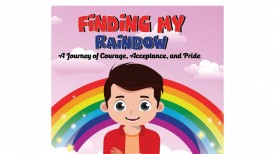New Children’s Book Encourages Stimming for Self-Expression and Regulation
A new children's book is bringing attention to stimming, demonstrating how it is a form of self-expression for kids. Stimming, short for self-stimulation, is a common practice among children with autism, helping them to feel calm and focused.
According to the National Autistic Society, stimming encompasses a range of actions like arm or hand-flapping, finger-flicking, rocking, jumping, spinning or twirling, head-banging, and complex body movements. This behavior may also involve repetitive actions with objects, like flicking a rubber band, twisting a piece of string, or repeating sensory activities, such as continuously feeling a particular texture.
Embracing Stimming
Individuals on the autism spectrum frequently encounter discrimination due to stimming. "Flap Your Hands: A Celebration of Stimming," a children's book, offers a contrasting viewpoint, portraying stimming as a positive and beautiful aspect. It guides families on a vibrant exploration of acceptance and happiness.
Steve Asbell, the author and illustrator, is diagnosed with autism as an adult. He created the comic strip "Stimmy Kitty," which offers a unique perspective on childhood experiences through an autistic lens. As an active member of SCBWI, Asbell received the Rising Kite Award for illustrations. Steve resides near Jacksonville, Florida, where he enjoys drawing and gardening with his family.
Speaking to Deepa Fernandes from Here & Now, Asbell shared insights about the book. He shared that having been diagnosed with autism helped him to understand himself and practice self-care. Like other late-diagnosed people with autism, Asbell learned to mask behaviors that are often considered not normal.
READ ALSO: Malia Maunakea Set to Release Her Second Children's Book 'Lei and the Invisible Island'
According to Asbell, many children are taught by their parents to suppress stimming behaviors to fit into society better. However, Asbell emphasized recognizing that stimming serves a purpose for self-regulation. He aimed to convey to young readers that embracing their identity is acceptable and their unique qualities should be celebrated.
Encouraging Expression for Self-Regulation
Asbell compared stimming to a graceful dance between individuals and their surroundings, including elements like air currents, sunlight, and all sensations experienced in the moment. Stimming, he suggested, is a way of engaging with and coping with these sensory inputs.
Fernandes described the book as a delightful and uplifting means of encouraging children to express themselves authentically. She mentioned that she has a neurodiverse child and commended the illustrations.
Regarding the illustration process, Asbell initially used only five colors with colored pencils. Initially, the colors appeared harsh and did not blend well. However, as the story progressed, the colors gradually blended, mirroring the narrative of children beginning to stim. This blending symbolizes stimming, which brings the senses together for calm and comfort.
Insights from experts suggested that children should be allowed to stim. Behavior analyst and advocate Joy Johnson urged parents and others to reconsider their views on stimming, emphasizing that it is not merely a behavioral problem. Johnson highlighted its crucial role in emotional regulation for individuals with autism. Stimming serves as a valuable coping mechanism, particularly for those overwhelmed by sensory stimuli, offering relief from stress and anxiety.
"Flap Your Hands" will be released on March 23.
RELATED ARTICLE: Jane Gregory Shares Personal Experience and Practical Guide in New Book 'Sounds Like Misophonia'
© 2023 Books & Review All rights reserved.
Popular Now
1
Books to Read After 'Fourth Wing': Top Picks for Fantasy and Romantasy Fans

2
‘The Secret Public’ by Jon Savage Book Review: An Insightful Look Into the LGBTQ Influence

3
Stephanie Regalado's 'If They Only Knew' Column Is Now A Book, Unleashing 60 Anonymous True Stories to Empower Women

4
'No Wire Hangers' Scene That Almost Did Not Happen: New Book Reveals Faye Dunaway's Struggles

5
Rare First Edition of Aphra Behn's Novel 'Oroonoko' Discovered in Kent: A Historic Literary Find

Latest Stories
Book Reviews
‘The Secret Public’ by Jon Savage Book Review: An Insightful Look Into the LGBTQ Influence

Book News
Stephanie Regalado's 'If They Only Knew' Column Is Now A Book, Unleashing 60 Anonymous True Stories to Empower Women

Book News
'No Wire Hangers' Scene That Almost Did Not Happen: New Book Reveals Faye Dunaway's Struggles

Book Reviews
‘The Perfect Couple’ by Elin Hilderbrand Book Review: A Captivating Summer Mystery

Book News
New Book ‘The Franchise’ Reveals Penguins President Kyle Dubas’ ‘Biggest Mistake’ as Maple Leafs GM











